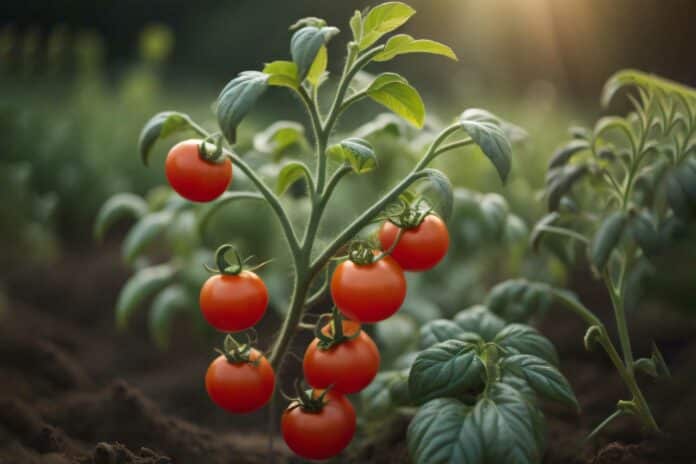Plants under stress exhibit modified phenotypes, such as shape, color, and scent variations. However, prior research has not been done on the sounds stressed plants send into the air.
Israeli scientists report in a new study that plants emit sound that we don’t hear. They recorded ultrasonic sounds emitted by tomato and tobacco plants inside an acoustic chamber and greenhouse while monitoring the plants’ physiological parameters.
They heard the sounds of stressed tomato and tobacco plants—from dehydration or having their stems severed. The sounds from the plants are comparable in volume to normal human conversation. Also, the frequency of these sounds is too high for humans to detect and hear, but insects, other mammals, and other plants could hear them.
This means that a lot of acoustic interaction occurs.
Previously, scientists recorded ultrasonic vibrations from plants. However, this study is the first to prove they are airborne, making them more relevant to other organisms in the environment.
Senior author Lilach Hadany, an evolutionary biologist and theoretician at Tel Aviv University, said, “Plants interact with insects and other animals all the time, and many of these organisms use sound for communication, so it would be very suboptimal for plants not to use sound at all.”
Using microphones, scientists recorded healthy and stressed tomato and tobacco plants. They stressed the plants via two methods:
- By not watering them for several days.
- By cutting their stems.
After recording plants, a machine learning algorithm distinguished between unstressed plants, thirsty plants, and cut plants.
It was found that stressed plants produce more noise than unstressed plants. A single stressed plant may produce between 30 and 50 clicks per hour at seemingly random intervals; in contrast, unstressed plants will produce significantly fewer sounds. The sounds made by plants are similar to pops or clicks.
Hadany said, “When tomatoes are not stressed, they are reticent.”
Water-stressed plants started making sounds before they became noticeably dehydrated. After five days without water, the frequency of sounds peaked before gradually declining as the plants dried out completely. The sounds released varied depending on what was stressing them out. The machine-learning algorithm could accurately distinguish between stress from cutting and dehydration. It could tell if the noises originated from a tobacco plant or a tomato.
Due to their ease of cultivation and standardization in the lab, tobacco and tomato plants were the study’s main emphasis, but the research team also noted a wide range of other plant species.
They found that several plants, such as corn, wheat, grapes, and cactus, emit sounds when stressed.
The mechanism behind this remains obscure, but scientists believe it might be due to the formation and bursting of air bubbles in the plant’s vascular system, a process called cavitation.
It is also unclear whether these sounds are used for communication, but their existence has big ecological and evolutionary implications.
“It’s possible that other organisms could have evolved to hear and respond to these sounds,” says Hadany. “For example, a moth that intends to lay eggs on a plant or an animal that intends to eat a plant could use the sounds to help guide their decision.”
Scientists noted, “Sound recordings of plants could be used in agricultural irrigation systems to monitor crop hydration status and help distribute water more efficiently.”
Co-senior author Yossi Yovel (@YovelBatLab), a neuro-ecologist at Tel Aviv University said, “We know that there’s a lot of ultrasound out there—every time you use a microphone, you find that a lot of stuff produces sounds that we humans cannot hear—but the fact that plants are making these sounds opens a whole new avenue of opportunities for communication, eavesdropping, and exploitation of these sounds.”
So now that we know that plants emit sounds, the next question is, ‘ Who might be listening?'” says Hadany. We are currently investigating the responses of other organisms, both animals and plants, to these sounds and exploring our ability to identify and interpret the sounds in completely natural environments.
Journal Reference:
- Itzhak Khait, Ohad Lewin-Epstein, Raz Sharon et al. Sounds emitted by plants under stress are airborne and informative. Cell. DOI: 10.1016/j.cell.2023.03.009
